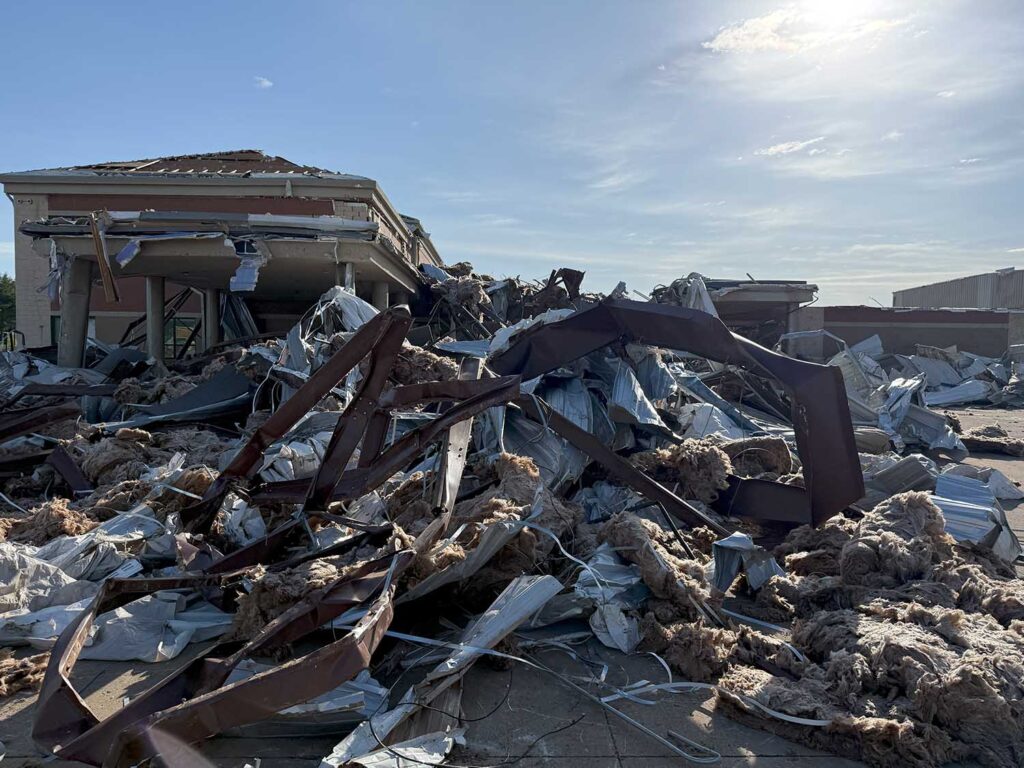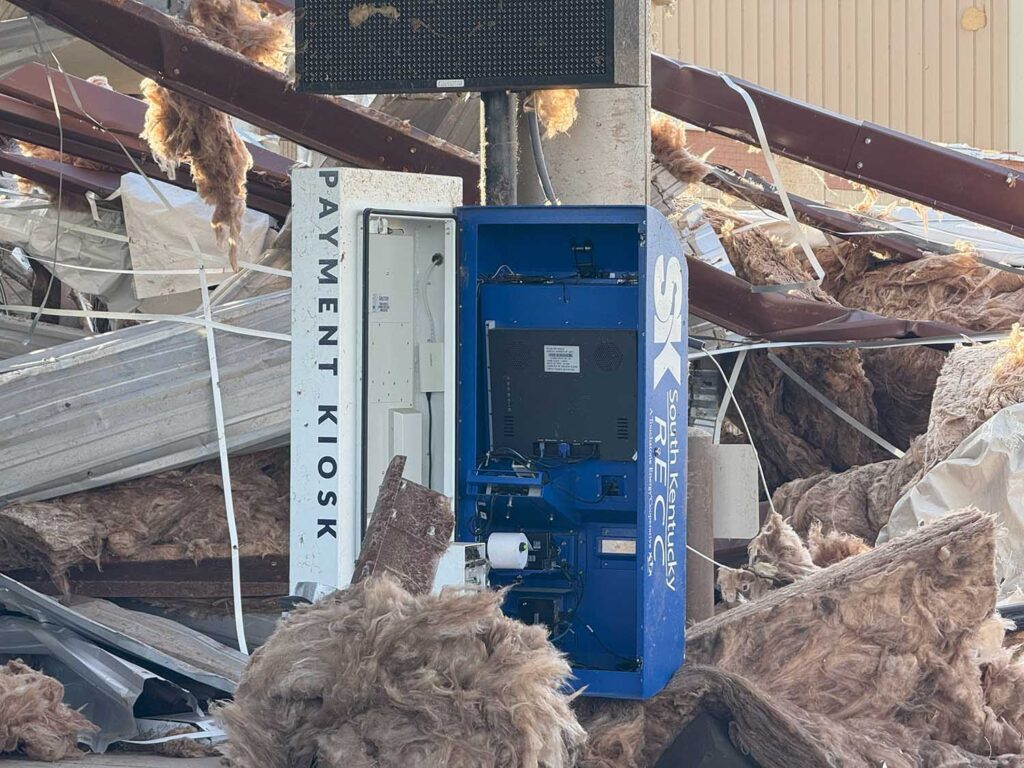
When South Kentucky RECC moved into its new headquarters in 2017, the building’s features included structural reinforcements to help the operations and call center withstand the region’s fierce weather events.
Eight years later, when six deadly EF4 tornadoes tore through southern Kentucky on May 16, the decision to harden the two spaces with 16-inch-thick steel-reinforced concrete walls and a concrete roof saved the life of night dispatcher Jeff Baker.
“I thank God and the co-op for that room,” said Baker, who was receiving outage reports inside the Somerset-based co-op’s operations center when the storm hit. “I’ve been in storms before, but nothing like this.”
As the powerful storm ripped off the roof of the co-op’s headquarters, it also blew apart a neighboring business, hurling girders at the co-op drive-thru. The tornado toppled the co-op’s radio communications tower and knocked out the outage monitoring system, causing an estimated $23 million in damage.

“The damage meant we didn’t have a system that we could look at,” Roy Bray, the co-op’s director of operations, told Kentucky Living magazine. “We were working as if it was 50 years ago.”
With the dispatch center offline and outage systems down, co-op employees’ resolve, teamwork and tenacity kept things running. They set up a temporary operations center and phone line to accept outage reports. They relocated to the co-op’s district offices and other sites, including a shopping mall. A local bank is accepting bill payments.
Despite working to replace 250 broken poles and restore outages—more than 27,000 of 70,000 meters were offline—the co-op decided to go ahead with its member appreciation day and board elections less than a month after the tornado.

“That was one of the first things we discussed,” said CEO Kevin Newton. Since the pandemic, the co-op has held virtual annual meetings but decided to proceed with a live, drive-thru event—complete with the co-op’s tradition of buckets filled with light bulbs.
“It’s hard not to get choked up,” said Morghan Blevins, South Kentucky RECC’s communications administrator. “Our goal always is to support our members.”
‘Poles and wires and transformers were just gone’
Leaving swaths of destruction that are visible from outer space, the May 16 tornado outbreak is one for the ages. Twenty people were killed, dozens more were injured, and countless businesses and residences were heavily damaged, including the home of a Jackson Energy Cooperative employee.
In total, more than 110,000 co-op members in Kentucky lost power, and crews from Georgia joined in-state crews to restore outages. In Laurel County, where 17 people died, the damage at McKee-based Jackson Energy was extensive. Crews relied on service maps to replace 165 poles, 125 transformers and 3.3 miles of power lines.
“Poles and wires and transformers were just gone, no idea where they were,” said Ryan Henderson, Jackson Energy’s vice president of engineering and operations. “Wires tangled up in trees and debris, cars, you name it.”
Moving forward
Meanwhile, demolition of the South Kentucky RECC’s remaining headquarters began July 3, and the co-op’s dispatch team is operating in a downtown Somerset building. For Baker, the jet engine-like roar of the passing tornado and other memories from that evening are hard to forget.
“To be honest, I was so busy with SCADA, trying to keep up, I wasn’t really thinking tornado,” said Baker. “But then all the circuits were opening, and the alarms were ringing, and the building started shaking. At that point, I knew something was going on,” which he confirmed when he peered through a window on the steel dispatch door and saw debris whizzing through the air.
Newton said it will take about two years to replace the headquarters building, which was scheduled for demolition the last week of June. Other damaged buildings, including the warehouse, will be repaired.
An outpouring of support from the surrounding community has boosted morale, Newton said. Residents have made food for workers, and local organizations are helping those who lost their personal cars.
“That part has been really positive,” he said. “Everyone working together and doing what they can to help.”
Victoria A. Rocha is a staff writer for NRECA.